hankyoreh
Links to other country sites 다른 나라 사이트 링크
[Korea travels] Tteokbokki: The Korean soul food 500 years in the making
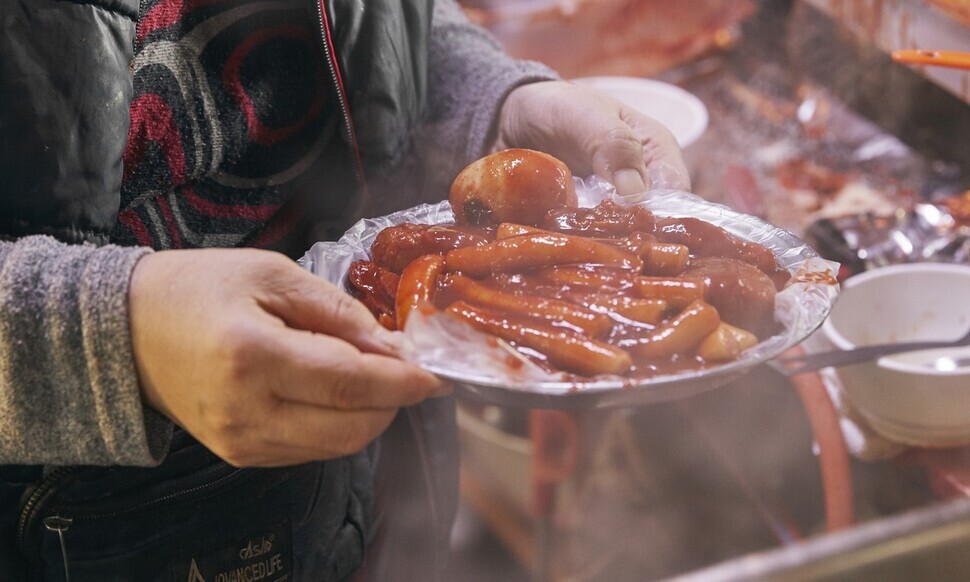
“It’s not just one of those dime-a-dozen snack bars. It holds a lot of childhood memories.”
Cheolgil Tteokbokki is a long-established restaurant serving tteokbokki, rice cakes simmered in red sweet and spicy sauce, in Seoul’s Seodaemun District. When the Hankyoreh visited on Saturday afternoon, 41-year-old customer Song Min-sook was sitting before a dish straight out of her childhood.
The hole in the wall restaurant is what Song calls her “tteokbokki hometown.”
“The neighborhood has changed, but the tteokbokki restaurant is still the same. The flavor hasn’t changed either,” she said. “I come here whenever I’m in the mood for tteokbokki.”
Lee Su-yeon, a 33-year-old office worker, was sitting out on the terrace by herself enjoying her tteokbokki, even with the temperatures falling below zero.
“I came because I heard there was a need-to-try tteokbokki place on Chungjeong Road,” she said.
“It’s the way I remember tteokbokki tasting when I was a kid,” she added. She also noted the “picturesque location next to the train tracks, which you don’t ordinarily see in the city.”
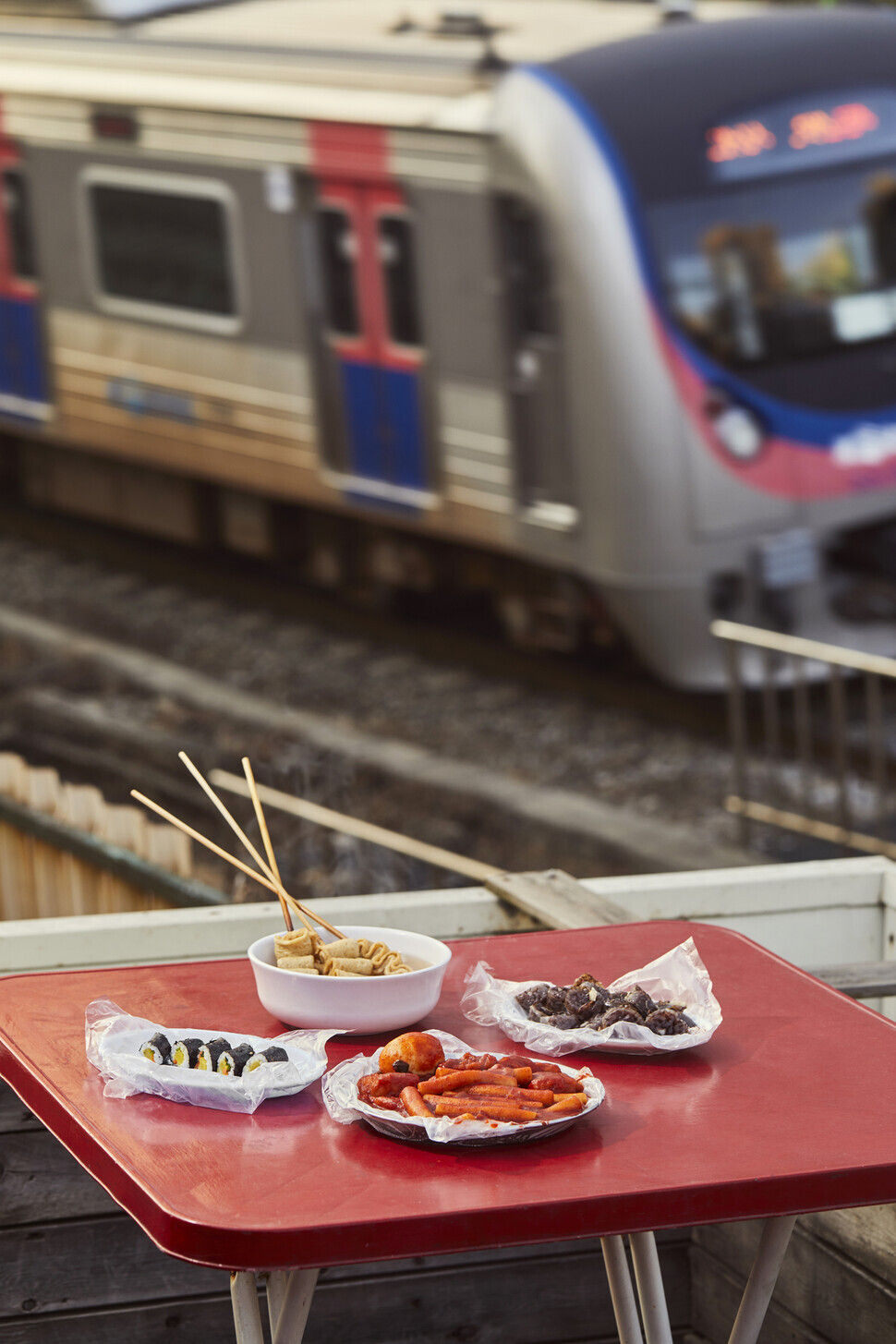
A favorite stop for tteokbokki aficionados, Cheolgil Tteokbokki — literally, “railroad tteokbokki” — is now in danger of being demolished. The local district office plans to build a park and green space on the location.
Inside the restaurant hangs a petition to preserve the establishment. It has around 600 signatures to date, including the names of many regulars.
“I’ve had a suit against the district office since 2017, but I’ve lost in the last two trials,” explained Cheolgil’s 61-year-old proprietor, Park Mi-hee.
“I’m getting set for the third trial so that I can fight to the end to keep this restaurant,” she said.
The trial outcomes have been discouraging for Park, but she continues preparing her tteokbokki dishes thanks to the support from her regulars.
“My mother-in-law started this place, and it’s been going for 50 years now,” she said.
“We’re still doing business with the same rice cake and red pepper places as we were back then. We want to preserve the old flavor,” she explained. “A lot of people still love that taste.”

Tteokbokki has long been a part of Koreans’ lives.
The original version was made by simmering beef, seafood, or mushrooms in soy sauce, spices, and oil with cylindrical rice cakes known as garaetteok and various vegetables. In older texts, the dish appears under the name “byeongja.”
The “Singnyo Chanyo (Dietetic Treatment Book),” written by the early Joseon physician officer Jeon Sun-ui in 1460, used the term “byeongja” to refer to a dish made by combining rice cakes with meat and pepper. The “Gyugon Yoram (Ladies’ Essential Guidebook),” a collection of recipes from 1896, also uses the name “byeongja.”
Historically, tteokbokki was considered a refined food that was eaten by nobles and members of the royal court. But in the wake of the Korean War in the 1950s, it transformed into a different kind of dish, made by boiling wheat flour cakes with fish cakes and vegetables in a red pepper sauce mixture. By the 1970s, it had become the people’s snack, enjoyed by people from all walks of life.
“Tteokbokki used to be an exclusive dish eaten at the palace, and the reason for its popularization is thanks to the widespread availability of red pepper sauce and wheat,” explained Lee Sang-hyo, a member of the food expert committee for the Korea Rice Foodstuffs Association and former director of the Topokki Food Research Institute.
How did this historic dish become such a perennial favorite?
Among Koreans, tteokbokki is associated strongly with memories of childhood. Most people have some memories of the dish, whether it was buying it for a few bucks from the “bunsik” snack bars by their school or enjoying made-from-scratch tteokbokki with their friends.
The dish is a kind of nostalgia trip sending people back to a vanished past. This also explains why the humble older establishments that preserve the old flavor have managed to stay popular even with the emergence of many new franchises.
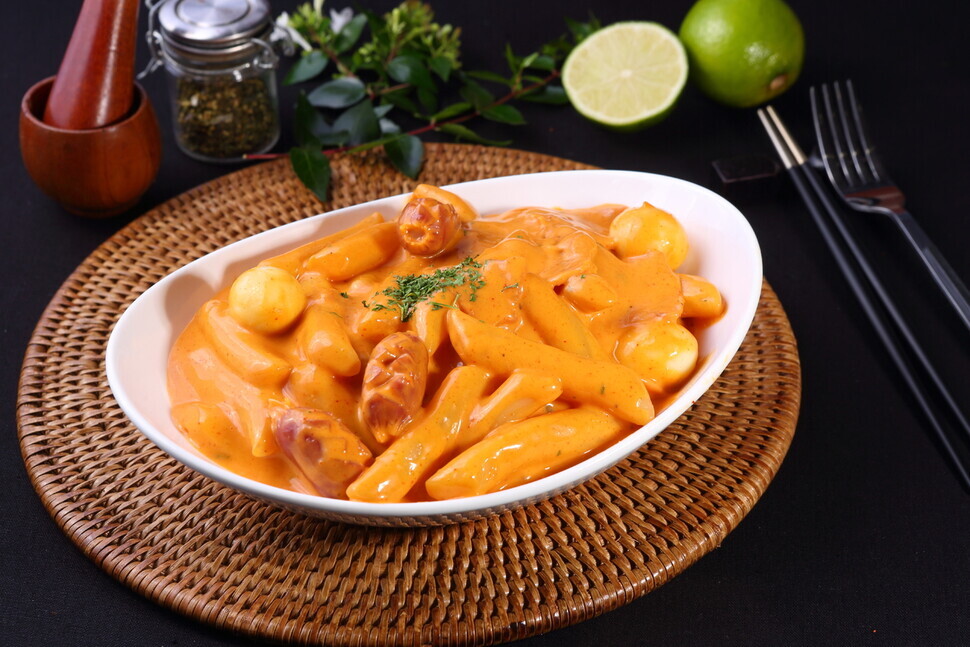
At the end of the day, the biggest draw is the powerfully addictive spicy flavor.
“Tteokbokki has all the flavors we instinctively enjoy: sweet, spicy and salty,” explained Hong Sin-ae, a culinary researcher and author of the book “Everyone’s Tteokbokki.”
“It’s a flavor you can’t stop yourself from eating, and a flavor you never get tired of,” she said.
Another reason for tteokbokki’s popularity is the potential for different variations. As more and more franchises popped up in the 2000s, the dish expanded from the traditional spicy red pepper version to incorporate a wide array of different sauces.
The more diverse menu — often pricier than in the past — including versions made with rosé sauce, cream sauce, and toppings such as cheese and squid.
Kim Bong-gyeong, a culinary researcher and author of “Tteokbokki in a Bite,” said, “Tteokbokki has undergone a lot of changes with the trends of the times, including everything from the rice cakes themselves to the sauces.”
“Recently, they’ve come out with vegan tteokbokki in response to trends towards vegetarianism,” she noted — a reference to ways in which tteokbokki cooks have tried out different variations to suit the diversity of generations and palates.
In addition to its gift for transformation, tteokbokki is also outstanding at adaptation. It goes well with any sort of food, including meats and seafood.
“When you have tteokbokki, you can include whatever toppings suit your taste,” Kim said. “That’s one of the strong points of tteokbokki: you can include any sort of ingredient, whether it’s instant noodles, bean sprouts, cheese — whatever you’ve got.”
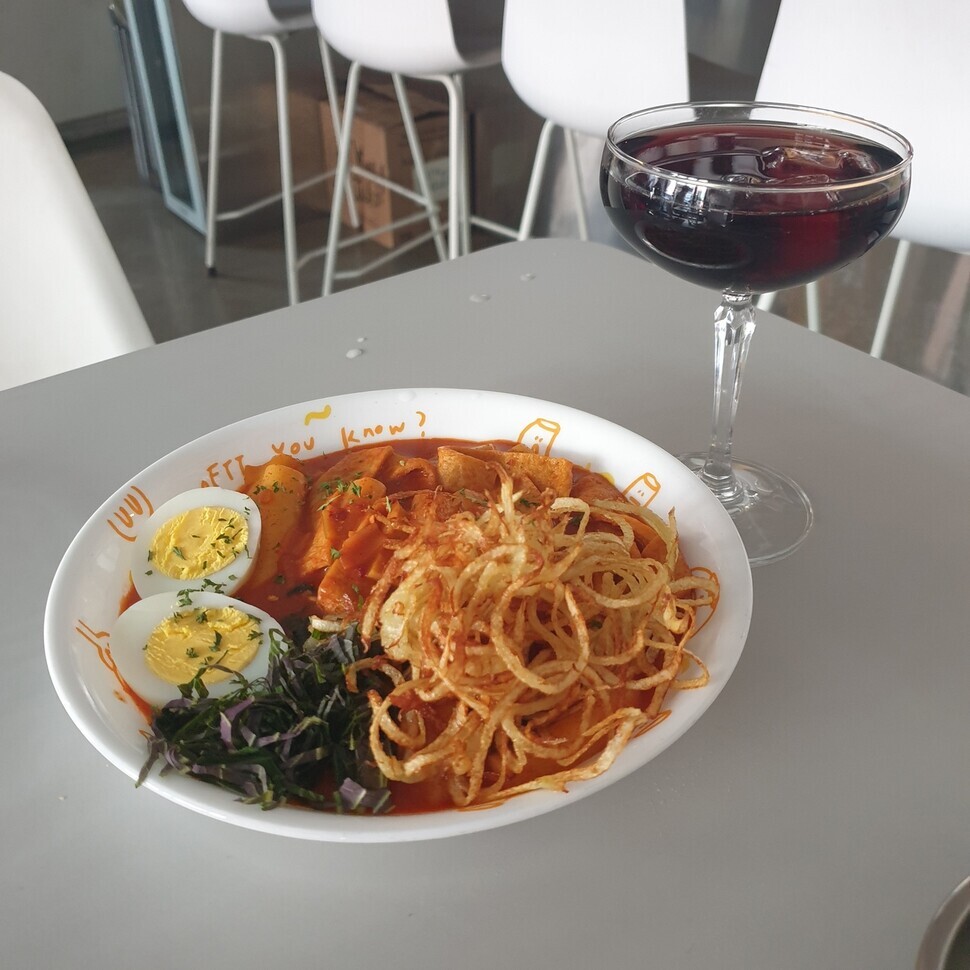
As the Cheolgil Tteokbokki example shows, tteokbokki is more than just a dish to Koreans. It’s associated with childhood memories, like those bunsik restaurants by their schools — a “soul food” that nourishes the famished heart. In the sadness of the pandemic era, it has been one of the most comforting of comfort foods.
The Korean love for tteokbokki has only burned brighter with the emergence of rosé tteokbokki, a creamy yet spicy version that appeared a few years back. It’s the kind of dish that some people have never tried — but that no one has eaten just once.
The rosé craze has been particularly strong among members of Korea’s younger generations.
The sauce is made by mixing heavy cream and milk in with the traditional tteokbokki spices of red pepper sauce and powdered red pepper. Tteokbokki franchises have been busily coming up with their own rosé tteokbokki dishes to meet the demand.
“The people who order rosé tteokbokki are very often young people in their 20s and 30s and people who live on their own,” said an employee at Baedduk, a chain that serves rosé tteokbokki.
“Thanks to the popularity of the rosé flavor, we reached more than 500 franchises within two years of our 2019 launch,” they explained.
With tteokbokki’s popularity continuing unabated even amid the pandemic, a new type of restaurant has come along: the so-called “bunsik bar,” which sells tteokbokki along with wine and other alcoholic beverages.
One such establishment is Oftt, located in the Seongsu neighborhood of Seoul. When the Hankyoreh visited, fast-paced rap music was playing in the background as the spicy tteokbokki aroma wafted through the air.
It’s a stripped-down establishment with five tables and a bar at the center, but it emanated a hip sensibility with its vintage interior and its exposed cement walls. It was opened in May of last year as a partnership by tteokbokki lovers; a second store has already been opened less than a year later, they said.
The menu at Oft includes “tteokbokki and fritters,” “sundae [blood sausage] and house wine” (4,000 won), and a wine-based “prom cocktail” (4,000 won). Diner can bring their own beverages to be opened for a corkage fee.
“We’ve created our own signature tteokbokki using fried rice cakes and tomato sauce,” explained Oftt owner Baek Young-jin.
“Our main items are the signature tteokbokki paired with natural wine. We mainly get customers in their 20s and 30s who are intrigued by the new concept of a ‘bunsik bar,’ but we also get a lot of people in their 40s and 50s.”
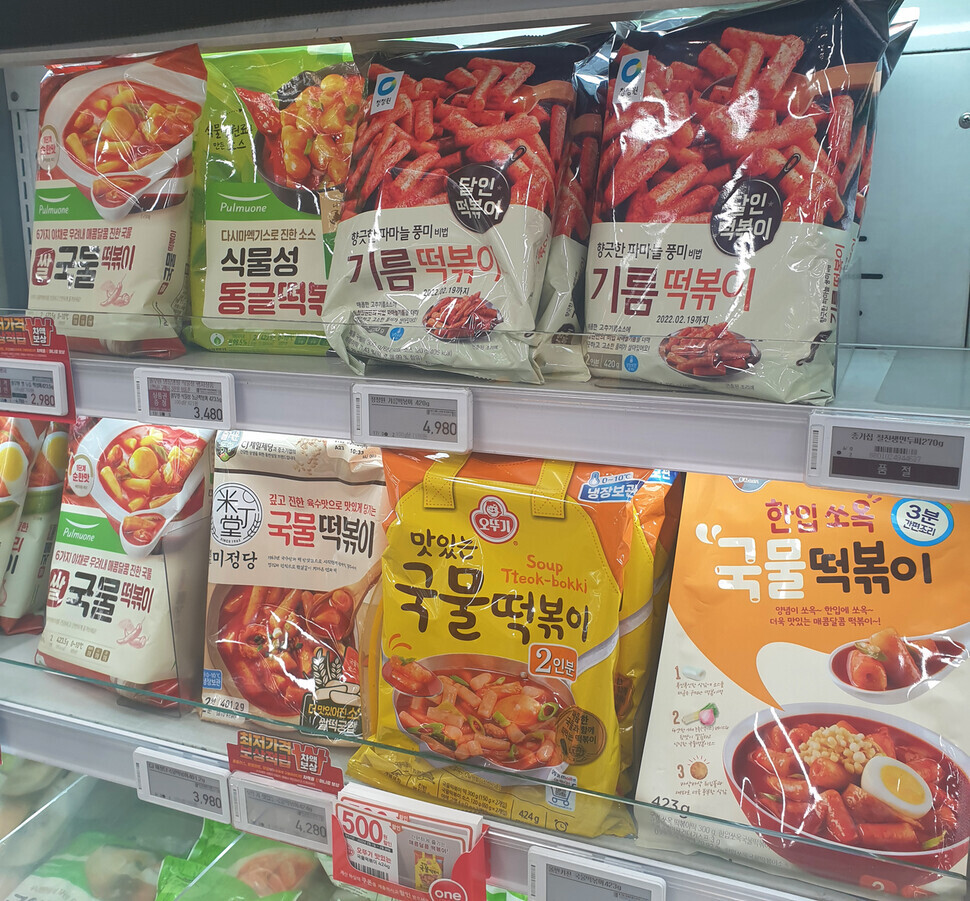
With all this love for tteokbokki, meal kits have also been enjoying a boost. It’s evidence of the dish’s transformation from a snack into a meal in its own right.
In 2021, tteokbokki kit sales by the online distributor Market Kurly were up by 303 percent from two years earlier. Various flavors of tteokbokki with regional or neighborhood twists make up some of its top sellers.
“Tteokbokki is a dish that children and adults alike can enjoy in different ways — as a snack, a meal or a side dish,” a Market Kurly official said. “The fact that you can add different ingredients to suit your tastes is another factor behind its popularity.”
That popularity is not restricted to Korea. The tteokbokki kits have also reached overseas markets, thanks to a boost from the pandemic. The Korean Wave in popular music and television has also helped establish tteokbokki as one of the leading “K-foods.”
According to the Korea Customs Service, tteokbokki exports amounted to US$54 million in 2020, a rise of 56.7% from the year before.
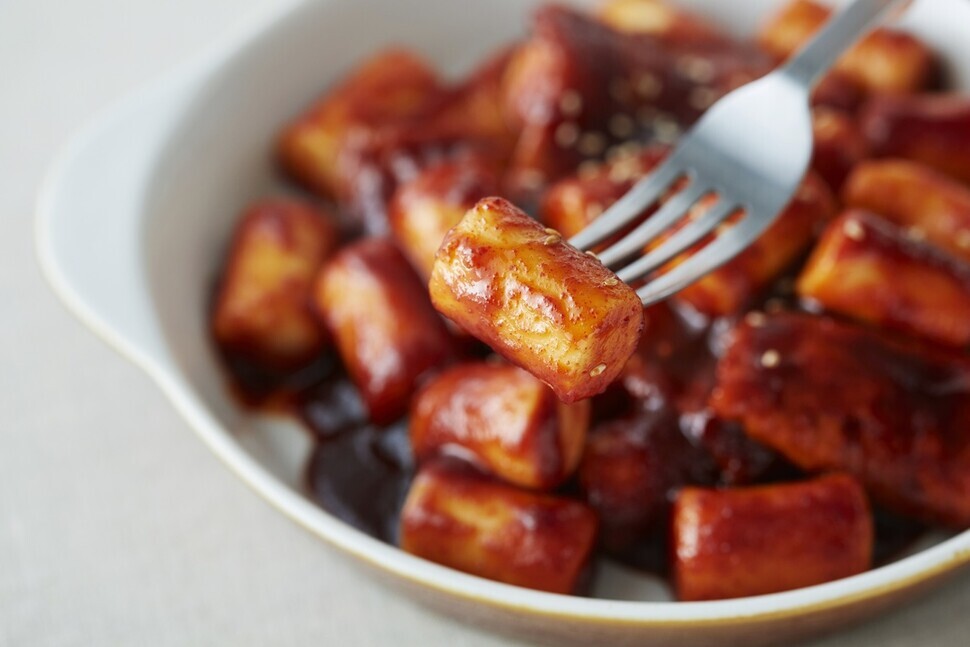
The boom has also drawn attention to the dish’s main ingredient, gochujang red pepper sauce. Exports of the staple Korean sauce were up by 35.2% from the year before, while exports of tteokbokki rice cakes had risen by 42.4%.
Even as the pandemic rages, the love for tteokbokki shows no sign of cooling. As a snack, a meal, or a side dish, it continues to feed those who are hungry.
There’s something for everyone: versions that retain the old flavor, together with others that offer new fusion takes. New hit items come and go, but tteokbokki’s popularity stays the same. It just keeps transforming.
Tteokbokki: the immortal dish.
By Her Yun-hee, staff reporter
Please direct questions or comments to [english@hani.co.kr]

Editorial・opinion
![[Column] Park Geun-hye déjà vu in Yoon Suk-yeol [Column] Park Geun-hye déjà vu in Yoon Suk-yeol](https://flexible.img.hani.co.kr/flexible/normal/500/300/imgdb/original/2024/0424/651713945113788.jpg) [Column] Park Geun-hye déjà vu in Yoon Suk-yeol
[Column] Park Geun-hye déjà vu in Yoon Suk-yeol![[Editorial] New weight of N. Korea’s nuclear threats makes dialogue all the more urgent [Editorial] New weight of N. Korea’s nuclear threats makes dialogue all the more urgent](https://flexible.img.hani.co.kr/flexible/normal/500/300/imgdb/original/2024/0424/7317139454662664.jpg) [Editorial] New weight of N. Korea’s nuclear threats makes dialogue all the more urgent
[Editorial] New weight of N. Korea’s nuclear threats makes dialogue all the more urgent- [Guest essay] The real reason Korea’s new right wants to dub Rhee a founding father
- [Column] ‘Choson’: Is it time we start referring to N. Korea in its own terms?
- [Editorial] Japan’s rewriting of history with Korea has gone too far
- [Column] The president’s questionable capacity for dialogue
- [Column] Are chaebol firms just pizza pies for families to divvy up as they please?
- [Column] Has Korea, too, crossed the Rubicon on China?
- [Correspondent’s column] In Japan’s alliance with US, echoes of its past alliances with UK
- [Editorial] Does Yoon think the Korean public is wrong?
Most viewed articles
- 1‘We must say no’: Seoul defense chief on Korean, USFK involvement in hypothetical Taiwan crisis
- 2N. Korean delegation’s trip to Iran shows how Pyongyang is leveraging ties with Moscow
- 3‘Weddingflation’ breaks the bank for Korean couples-to-be
- 4Korea sees more deaths than births for 52nd consecutive month in February
- 546% of cases of violence against women in Korea perpetrated by intimate partner, study finds
- 6Will NewJeans end up collateral damage in internal feud at K-pop juggernaut Hybe?
- 7[Column] Park Geun-hye déjà vu in Yoon Suk-yeol
- 8[Editorial] New weight of N. Korea’s nuclear threats makes dialogue all the more urgent
- 9Amnesty notes ‘erosion’ of freedom of expression in Korea in annual human rights report
- 10“Parental care contracts” increasingly common in South Korea